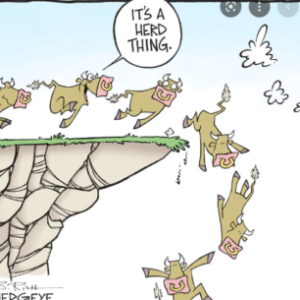The 21st century is the context for the destination we seem to have arrived at today _ a decline in our proclivity to survive_ This decline is evident in the statical rise of suicide and its attempt in the society.
Marcus in 2012 stated that Almost one million lives are lost yearly due to suicide, which translates to 3000 suicide deaths every day. For every person who completes suicide, twenty or more may attempt to end their life.

One of the lead elements of this modern society is its capitalistic nature. Although not in exclusivity, Capitalism stands at the root of societal ills. The capitalist transformation of society and culture can be examined in the present commercialization of previously non_ commodifiable goods.
Kuttner in 1999 writes that “today commercialism is relentlessly encroaching on realms where it doesn’t belong”. We find ourselves in a space (time and zone) where almost everything can be bought and sold, hence the thriving of such practices as prostitution, surrogacy, organ sales, e.t.c.
Our lives seem to be ruled by market and market value like never before. In this society, there is a shifting cultural emphasis away from intrinsic goals e.g, social relationships, community and competence to extrinsic goals like money, status and appearance.
Accumulation by dispossession has continued to play a major role in capitalist development. While this statement has a long academic lineage and a complex depth, it can assume a perfect role in evaluating more relatable present-day happenings instead of colonialism.
In this context, dispossession then takes up a meaning that is not strictly literal, it becomes inclusive for more than just land or property and extends to values and lives. Without involving the elitist group usually begrudged for inequality in wealth distribution one can examine everyday life in the 21st century in this light.
Before delving into an example examining the trajectory of unwilling transactions that would naturally tingle our senses as unfair, one can take a simple instance of prostitution; a girl willingly sacrifices her moral value and personal pride on the altar of wealth accumulation.
In a more extreme circumference, people are kidnapped and trafficked for their organs because of wealth. This is a perfect case of maliciously taking possession of one’s organ to accumulate wealth.

Sometimes the act of dispossession is not the fault of a particular person, here the adage, “one man’s food is another man’s poison comes to play.” The death of an individual becomes the source of wealth accumulation or fame accumulation for other people. Now people create content for gains out of burial, condolence or respect for the dead ceremonies.
The fact that commodification that is prevalent in society entails production for profit rather than social needs endangers us all. The maximization of profit is the end goal of production.
The quality of what is being produced might be harmful but as long as it generates gains for a particular group it is continued. The quality of life, well being of others come secondary to gains. This is especially reflected in the media.
In the discourse of commodification, one cannot ignore its effect on social media(internet) and the role of social media. Sida Vaidhyanathan notes that we are not google customers we are its product. This is also true of social media.
Hall in 1981 explains that “the media for example plays a part in the formation and in the constitution of the things that they reflect”. In this context, this can be translated to, while the media reflects the capitalist society where individuals are money oriented, it also breeds and institutionalizes money-driven individuals that make up the society.
It subtly forces the masses to participate actively in alienating, commercializing and deforming stable values. If the media plays a role in the formation, then it would follow that our ideologies, thought processes, and behaviours are largely influenced by the media.
This would be less horrifying if the media was an autonomous entity objectively concerned with informing, educating and entertaining the public rather than a controlled commodified system valued for its profitability by its owners.
This profitability is not just manifested in the active use of social media and its proliferation but also its hypnotic effect on its users. The internet through strategically feeding the mind with information results in a certain herd action that maintains that status quo already established In the society which proves profitable to a certain sect. It’s a case of consumption and reproduction.

Our ultimate trust and dependence on the internet promise to doom us. BBL surgery became a fashion trend that made millions of surgeons, the fashion industry and body augmentation products. Body image and perfection were pushed in a certain light.
There was a mass depiction of if you look a certain way, you should feel a certain way (happy/ secure or unhappy/insecure/unhealthy). This narrative drove people despite the consequence to go under the knife and some others into body insecurity that resulted in a certain depression.

Social media is not dangerous in itself, the danger is our unquestionable belief and dependence on the internet and its capability to drive agenda and alter perception.
The internet helps to solidify money-oriented and fame-oriented individuals. Its recognition of extreme achievement, its commemoration of successful individuals measured by wealth and endlessly projecting this information to the masses creates a deformed mass psyche.
The influx of such information and the seeming happiness and perfection of everyone on the internet seems to make downtime in the graph of life abnormal.
Valentin Volosinov in 1973 argues that “meaning is always determined by the context of articulation”. An addition to this quote and the idea of articulation was given by Hall in 1982 when he said, “meaning has to be expressed”.
If one tries to question the meaning of his/her life against the above backdrop (lavishness and recognition of the extreme), one’s life meaning as determined by this context would be purposeless. In this society, objects and entity that have no price have no utility or value.
In the expression of this meaning attained, there might be a full-blown suicidal act/attempt or a slow decline into depression.
A manipulated narrative in addition to money-oriented individuals does not just end on that note. When it’s brought down to the psychological level, people benefit from the emotional war as much as people do from physical war.
The casualties of these wars are irrelevant in the face of profits made. We’re being sold these narratives so we could act a certain way that would lead to income generation for a set of people.
This is evident in the current trend of media pessimism. There is an influx of negative information, wars, inflation, eco declination, mass shooting (with no specific measures put in place for future prevention of a repetition), serial killing and death-sentence virus.

These bleak global events that the media feeds us create an aura of gloom in our subconscious. This gloom is afterwards fed by our crisis and insecurity. The effect is the increase of people that seems to be suffering from one mental illness or another especially depression.
The narrative of a million depressed people continues to establish and reinforce the importance of psychology, psychiatry and therapy. The relevance and number of therapists in society increases every day, yet the number of suicides and depressed people is on a rise.
To be relevant and make gains off their relevance, emotional crisis has to be preached and sometimes created. It is no coincidence that since the inception of psychopathology more individuals have been diagnosed with psychological issues.
Social media and the narrative we’re being sold on its platforms, is a tree with many branches that cannot be exhausted in this limited space. As a platform, the justification for its existence is to aid communication and create unity despite diversification (geographical and religious).
Despite this goal Mcpherson in 2006 notes that “modern society is also characterized by an alarming trend towards isolation. In 1985, the general social survey found the mean and mode for the number of confidants one can comfortably discuss personal issues with to be 3 and 3 respectively. In 2004, a repeat of the survey revealed a drop to 2 and O”.
With the revelations of such surveys one is left to wonder, does social media create a bridge or a barrier? Do people find a connection on social media or are they just connected to their phones? Are emotions purged on social media or do we have cold emojis that substitute for our emotional expression?

